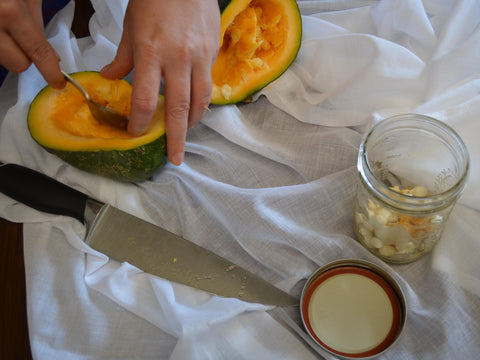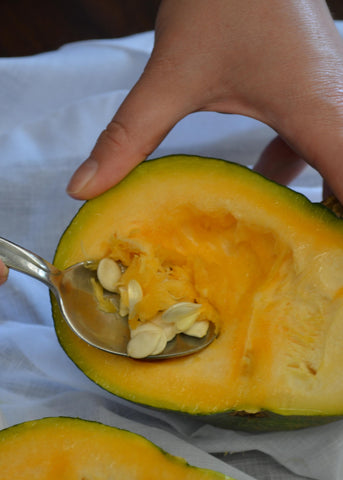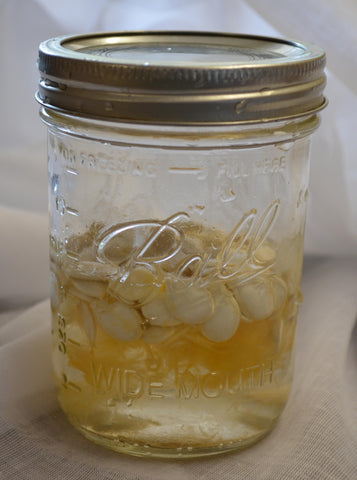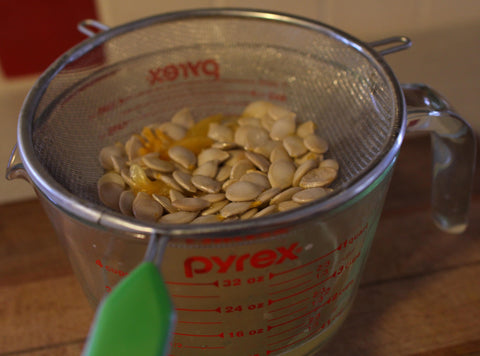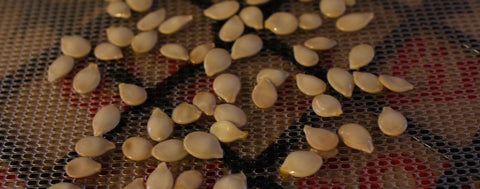Saving your own squash seeds from your favorite varieties has many benefits. Here are a few:
- Protect against seed companies dropping your favorite variety.
- Select seeds for your personal tastes and desires.
- Enhance micro-regional adaptation of your seed.
- Save money.
- Gives you ‘currency’ for trades and seed-swaps.
- Apparently, so my friend told me, seed-savers are really cool.
Botanical Notes:
Family: Cucurbitaceae
Species: Cucurbita spp. (there are four species that will not readily cross pollinate: c. pepo, c. maxima, c. moshata, c. mixta)
Flower: Monoecious (male and female flowers on the same plant).
Pollination: Insect, bee.
Expected Seed Life: 4-6 years.
Isolation Distance: 1/2 mile or greater, easily hand-pollinated.
Botanical Info referenced from ‘The Seed Garden‘
How to save squash seed
We are going to assume that you attended one of our Seed Saving workshops and kept your squash isolated from other varieties of the same species, picked a fully mature fruit (hard rind, even for summer squash) with the traits that you deem desirable from a range of plants and are only trying to save from open-pollinated varieties. Note: It’s actually very easy to hand-pollinate squash flowers because they have large, easily recognizable male and female flowers. Otherwise you need to isolate by at least 1/2 mile.
Here is Angie saving some seed!
Step 1: Cut the squash and scoop the seed
Step 2: scrape all the seeds into a jar, don’t worry about goop
Step 3: top off with water and leave to ferment
Fermentation breaks down the gelatinous placental lining of the seed so that they can be dried for long term storage.

Step 4: drain off the fermented water
Step 5: power rinse the seeds to remove tenacious gloop
Step 6: lay seeds out to dry
Seeds need to pass the ‘snap-test’, which means a seed, when bent, will snap cleanly in two halves.
Step 7: completely dry seeds can be stored dry, dark and cool. I achieve this with a small mason jar, a silica gel pack and my basement refrigerator.
| |
Article Written by: Angie Lavezzo |
|
About the Author: Angie Lavezzo is the former general manager of Sow True Seed. Beyond her professional role at Sow True, Angie's passion for gardening extends into personal hands-on experience, fostering plants and reaping bountiful harvests. |


